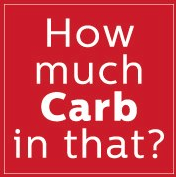What is 'carbohydrate counting'?
'Carbohydrate counting' refers to the process of quantifying or estimating the carbohydrate content of the food and drinks you consume.
Who should be 'carbohydrate counting'?
Many people with diabetes are often encouraged to have a good understanding of the carbohydrate content of food to manage their blood glucose levels (BGLs) alongside medication, such as insulin injections.
For some people, carbohydrate intake should be kept fairly consistent at meals and from day-to-day, whereas other people have more flexibility in their carbohydrate intake. If you would like to know more about this concept, please speak with an Accredited Practising Dietitian (APD) with experience in the dietary management of diabetes.
What foods contain carbohydrate?
Breads | Breakfast cereals | Grains (eg. oats, quinoa, barley) | Pasta | Rice | Noodles
Legumes (eg. lentils) | Starchy vegetables (eg. potato, corn, sweet potato) | Fruit | Milk, yoghurt, ice cream, dairy desserts
Cakes, pastries, biscuits, crackers | Sweets, lollies, chocolate | Sweet drinks (eg. soft drink, cordial, juice)
How do you 'count' or estimate carbohydrate?
The carbohydrate content (in grams) of packaged food is listed on the Nutrition Information Panel, making it relatively easy to calculate the amount you are about to consume.
Fresh foods are often not packaged, and it can be more difficult to estimate the carbohydrate content of those foods. Fresh foods, such as fruit and starchy vegetables, are an important part of a healthy diet and they should be eaten every day.
This guide can help you to estimate the carbohydrate content of fruit and starchy vegetables, (for example, potato and corn), as well as other foods and meals that are not packaged and therefore do not have a Nutrition Information Panel to indicate the carbohydrate content.
Carbohydrate counting can be done by adding up the total number of grams of carbohydrate in the foods or drinks about to be consumed. Another method is to count in portions or exchanges of carbohydrate. These are 10 gram or 15 gram 'lots' of carbohydrate (ensure you find out from your Dietitian or Doctor which of these options you should use). You may even choose to use a combination of both methods. It is recommended that you consult with an Accredited Practising Dietitian with experience in diabetes management for more assistance with carbohydrate counting.
Please note that this guide also contains foods that are considered to be 'Discretionary Choices' in the Australian Dietary Guidelines, meaning they are not necessary for daily intake in a healthy diet. These foods are often nutrient-poor but calorie-rich, and the consumption of these foods may need to be limited by people needing to lose weight.

